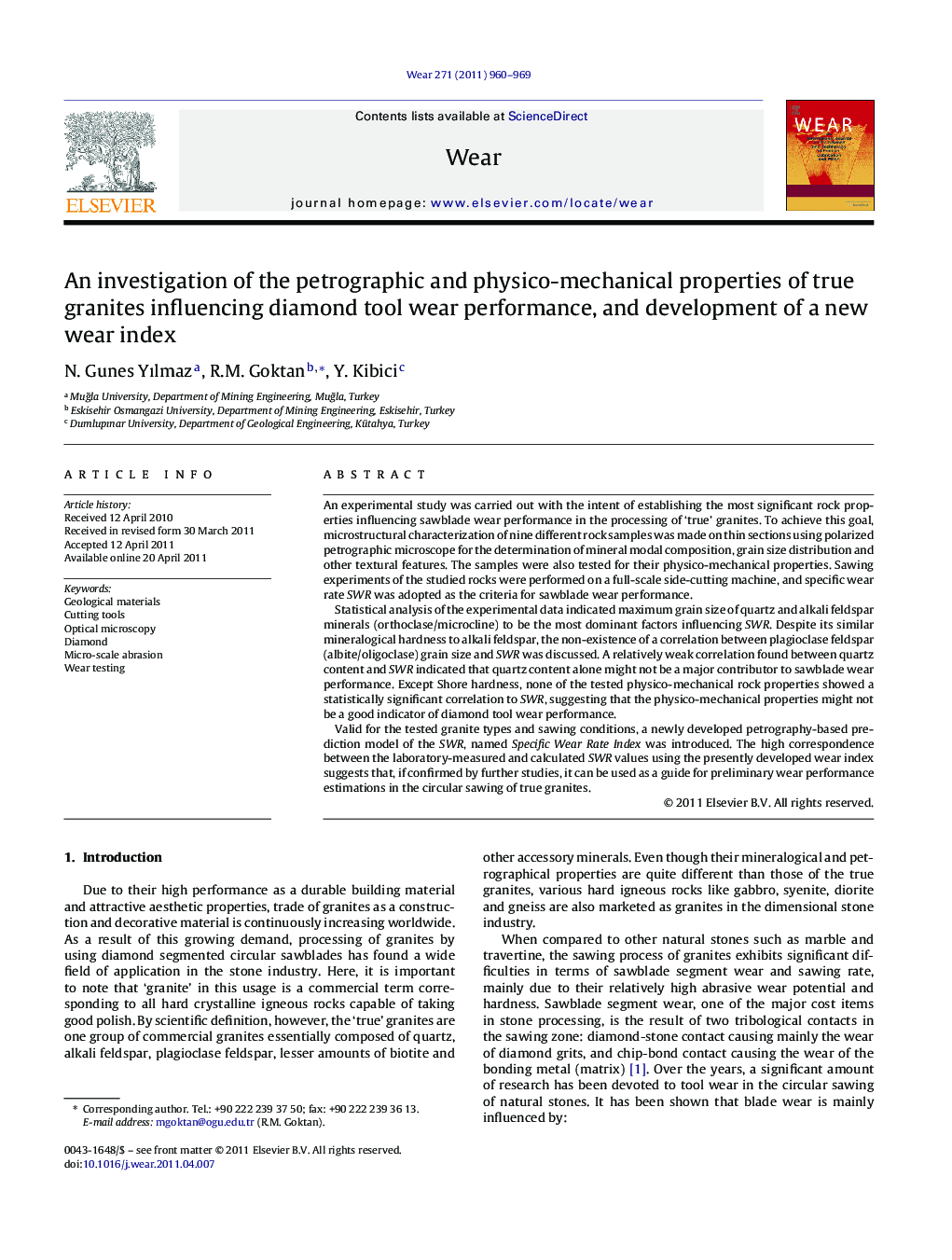| Article ID | Journal | Published Year | Pages | File Type |
|---|---|---|---|---|
| 618089 | Wear | 2011 | 10 Pages |
An experimental study was carried out with the intent of establishing the most significant rock properties influencing sawblade wear performance in the processing of ‘true’ granites. To achieve this goal, microstructural characterization of nine different rock samples was made on thin sections using polarized petrographic microscope for the determination of mineral modal composition, grain size distribution and other textural features. The samples were also tested for their physico-mechanical properties. Sawing experiments of the studied rocks were performed on a full-scale side-cutting machine, and specific wear rate SWR was adopted as the criteria for sawblade wear performance.Statistical analysis of the experimental data indicated maximum grain size of quartz and alkali feldspar minerals (orthoclase/microcline) to be the most dominant factors influencing SWR. Despite its similar mineralogical hardness to alkali feldspar, the non-existence of a correlation between plagioclase feldspar (albite/oligoclase) grain size and SWR was discussed. A relatively weak correlation found between quartz content and SWR indicated that quartz content alone might not be a major contributor to sawblade wear performance. Except Shore hardness, none of the tested physico-mechanical rock properties showed a statistically significant correlation to SWR, suggesting that the physico-mechanical properties might not be a good indicator of diamond tool wear performance.Valid for the tested granite types and sawing conditions, a newly developed petrography-based prediction model of the SWR, named Specific Wear Rate Index was introduced. The high correspondence between the laboratory-measured and calculated SWR values using the presently developed wear index suggests that, if confirmed by further studies, it can be used as a guide for preliminary wear performance estimations in the circular sawing of true granites.
► Maximum grain size of quartz and alkali feldspars were found to be the dominant factors influencing SWR. ► Physico-mechanical rock properties did not correlate with SWR. ► A new prediction model of specific sawblade wear rate is proposed.
